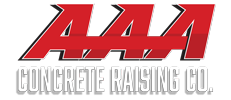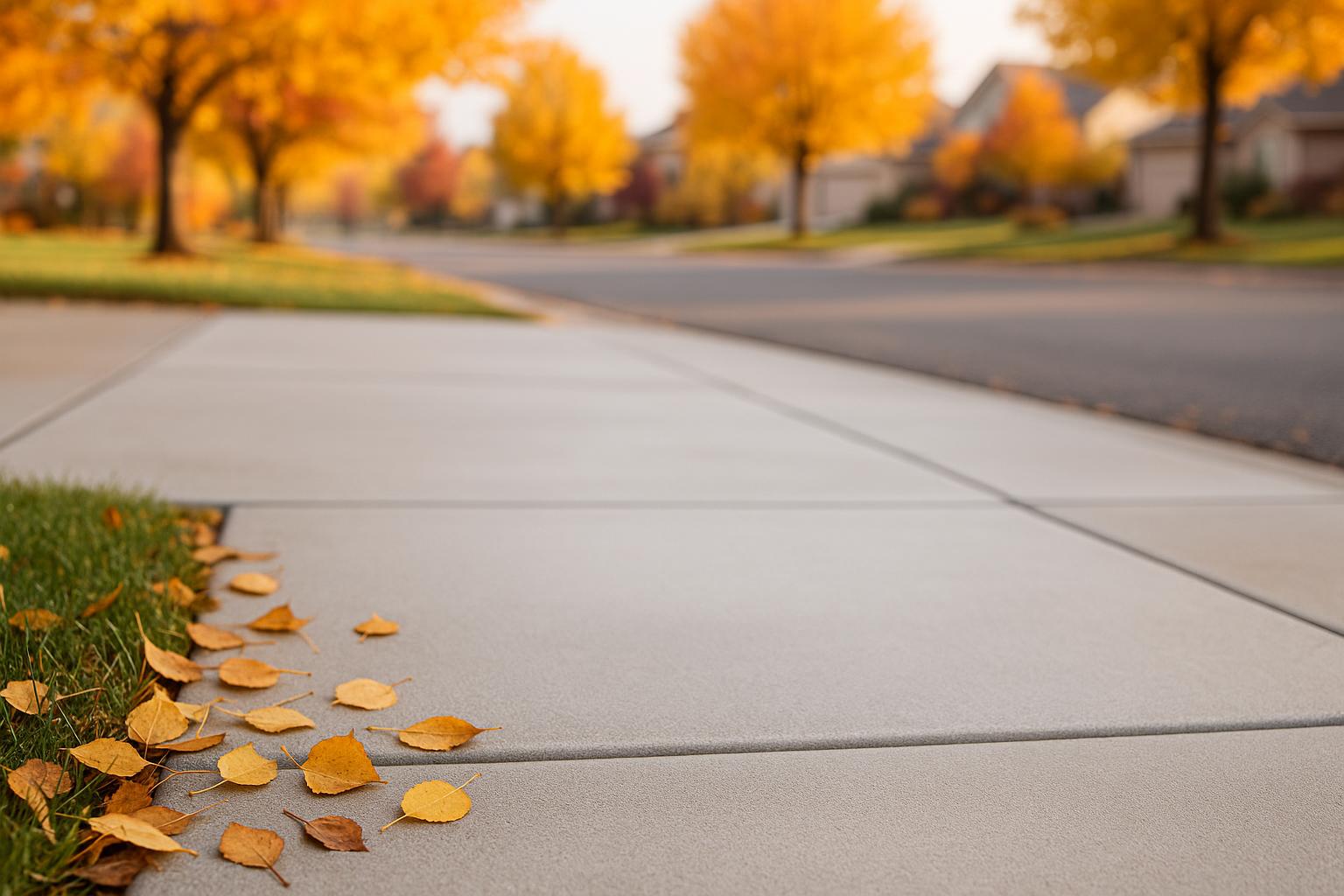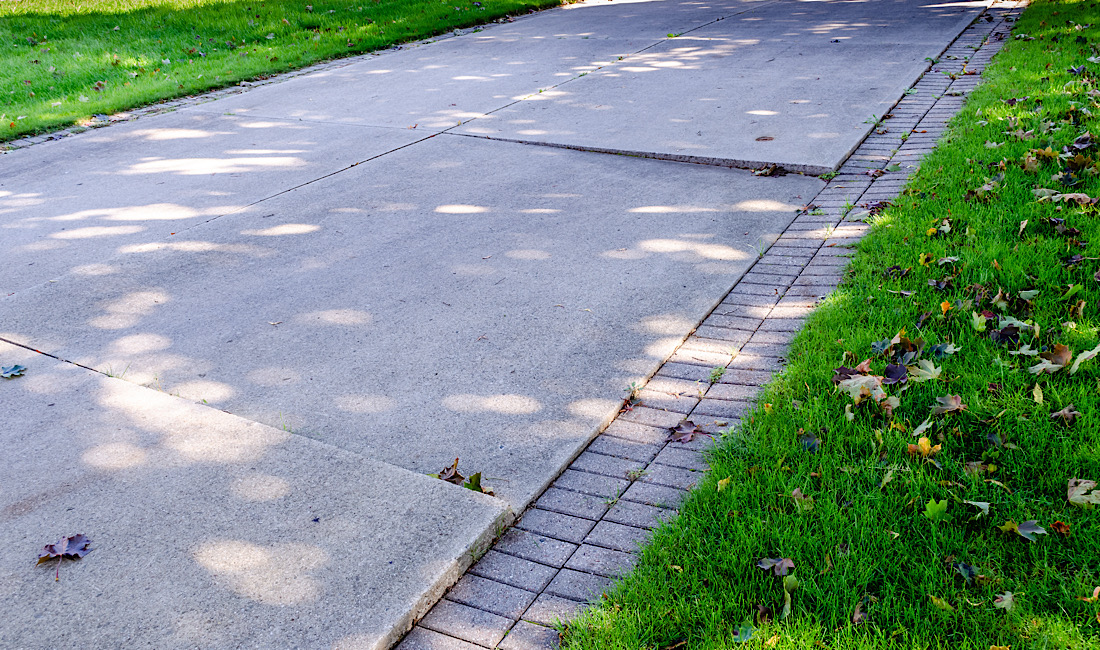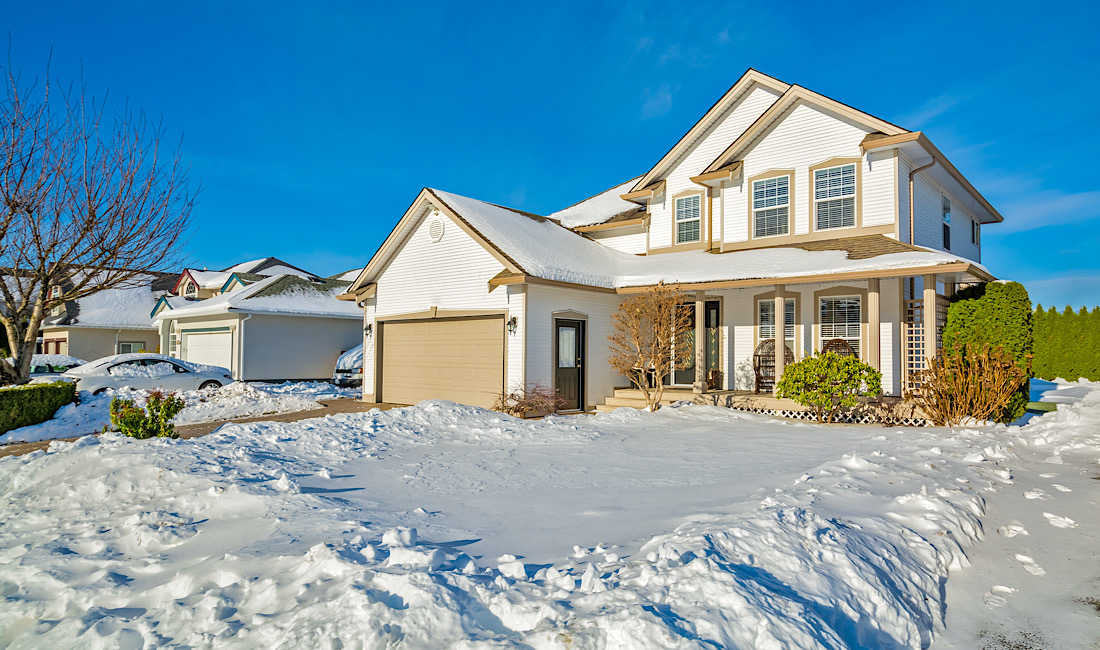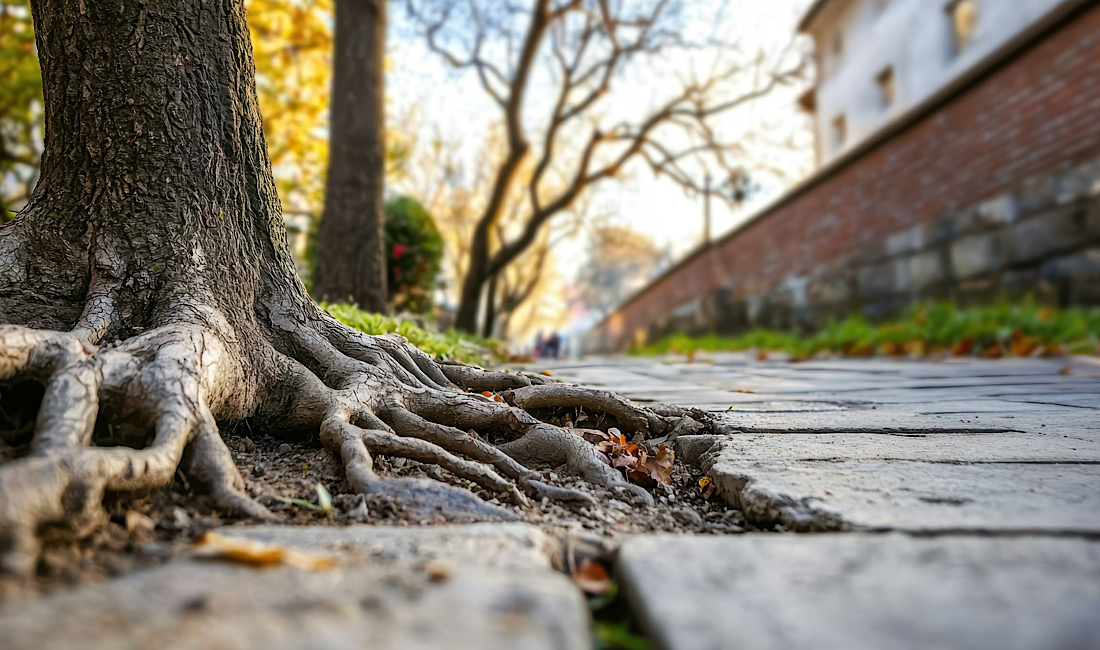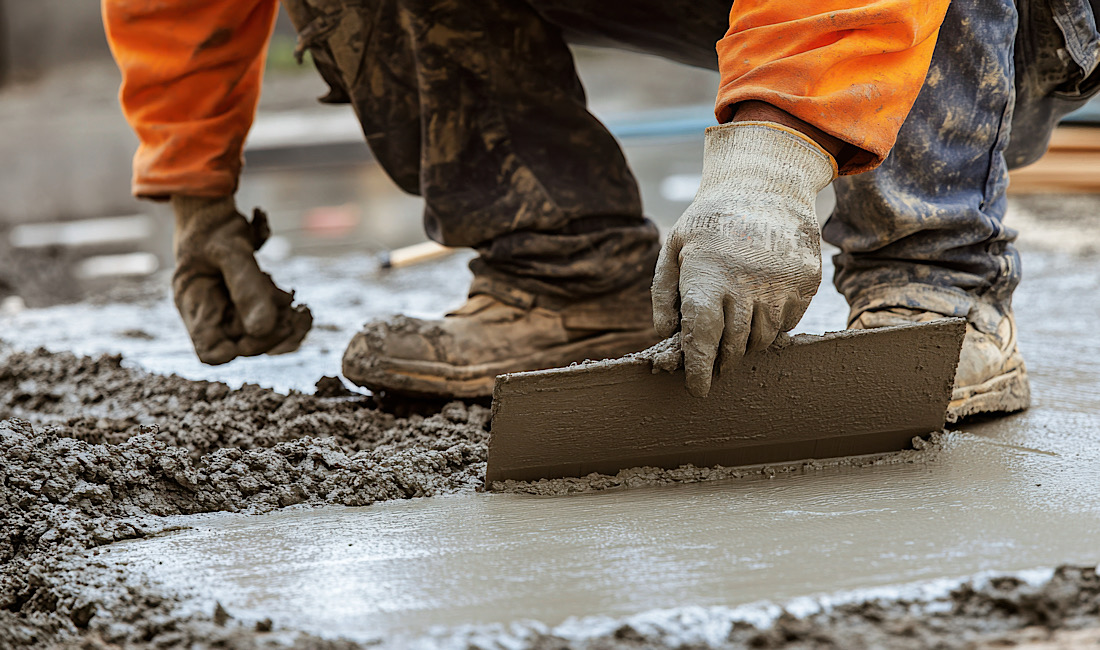Your Guide to Autumn Concrete Care
Autumn in Denver is a beautiful season, with crisp air and golden aspen leaves. However, for homeowners, this season also brings unique challenges for exterior concrete surfaces. The combination of falling leaves and increasing moisture can create a perfect storm for staining, cracking, and long-term damage to your driveways, patios, and walkways. Understanding how to provide effective fall concrete protection is essential for preserving your property’s value and safety.
This guide provides practical steps for essential Denver concrete maintenance, helping you prevent moisture-related issues before the winter freeze sets in. Proper care now can save you from costly repairs down the road.
The Hidden Dangers of Fall for Your Concrete
While a blanket of colorful leaves might look charming, it can be deceptively damaging to the concrete underneath. The two primary threats during the fall are organic stains and moisture saturation.
Organic Staining from Leaves
Leaves, especially from trees like oaks and maples, contain natural compounds called tannins. When leaves get wet from rain or morning dew, these tannins leach out, creating a dark, tea-like liquid. This liquid can easily penetrate porous concrete, leaving behind ugly, stubborn brown and black stains that can be incredibly difficult to remove.
The Threat of Trapped Moisture
Piles of damp leaves do more than just stain; they trap moisture against the concrete’s surface for extended periods. This constant dampness prevents the slab from drying out. As Denver’s temperatures begin to drop, this trapped moisture becomes an even greater liability. Water that has seeped into the concrete will freeze and expand, creating immense pressure from within. This freeze-thaw cycle is a leading cause of surface spalling, cracking, and deterioration. A small crack can quickly become a large problem when water is allowed to penetrate and freeze.
Did You Know?
- When water freezes, its volume can expand by up to 9%. This expansion exerts incredible force on the surrounding concrete, easily causing cracks and flakes.
- Sunken or uneven concrete slabs are magnets for water pooling. A low spot on your driveway repair project or patio can accelerate moisture damage significantly.
- Denver’s climate is particularly harsh on concrete due to its frequent freeze-thaw cycles, often experiencing dozens more cycles per year than other regions.
Actionable Steps for Fall Concrete Protection
Proactive maintenance is the key to moisture prevention and ensuring your concrete survives the fall and winter unscathed. Here are five essential steps every Denver homeowner should take.
1. Keep Surfaces Clean and Debris-Free
The simplest yet most effective step is to regularly remove leaves, dirt, and other organic debris from your concrete surfaces. Use a leaf blower or a stiff broom at least once or twice a week, and more often after rain or windy days. Don’t let wet leaves sit for days on end. This simple habit dramatically reduces the risk of both staining and moisture saturation.
2. Address Water Drainage Issues
Observe where water goes after it rains. Does it pool in certain areas on your patio, walkway, or garage floor? Proper drainage is critical. Ensure your downspouts and gutters are clean and direct water away from concrete slabs. If you notice persistent pooling, it may be a sign that the concrete has settled and the grading has changed.
3. Inspect for Cracks and Voids
Take a walk around your property and carefully inspect all your concrete slabs. Look for hairline cracks, wider gaps, and any signs that a slab is no longer level with its neighbors. A key issue to look for is voids beneath the concrete, often caused by soil erosion, which can lead to significant sinking and cracking. Addressing these soil erosion under concrete issues promptly prevents water from getting under the slab and causing more severe damage during a freeze.
4. Consider Professional Concrete Sealing
Applying a high-quality penetrating sealer is one of the best forms of moisture prevention. A sealer creates an invisible barrier that repels water, oil, and other liquids, preventing them from soaking into the concrete. This not only protects against freeze-thaw damage but also makes the surface much more resistant to stains from leaves and dirt.
5. Lift and Level Uneven Slabs
If you have sunken or uneven concrete, you have more than just an eyesore; you have a safety hazard and a water problem. Uneven sidewalks and walkways are serious trip hazards. Furthermore, these low spots collect water, leading to accelerated deterioration. Professional concrete leveling, or mudjacking, corrects the problem by lifting the slab back into place, restoring proper drainage and eliminating hazards.
Navigating Denver’s Unique Autumn Climate
The weather in Denver during the fall can be unpredictable. A warm, sunny afternoon can quickly give way to a freezing night or even an early-season snowstorm. This constant fluctuation puts immense stress on concrete. That’s why localized Denver concrete maintenance isn’t just a good idea—it’s a necessity. We understand the specific challenges posed by the Front Range climate and how to best prepare your concrete to withstand them, from your garage floor to your basement. Having a level and stable foundation before winter is your best defense.
Protect Your Concrete Before Winter Hits
Don’t let autumn leaves and moisture compromise the integrity of your concrete. If you’ve noticed uneven slabs, water pooling, or growing cracks, the time to act is now. The team at AAA Concrete Raising has been serving the Denver metro area since 1988 with expert mudjacking and concrete repair services.
Frequently Asked Questions
Can leaf stains on concrete be permanent?
If left for too long, especially on unsealed concrete, tannin stains can penetrate deeply and become very difficult to remove completely. Promptly cleaning leaves and sealing your concrete are the best preventative measures.
How often should I seal my concrete in Denver?
Due to Denver’s harsh weather and strong UV exposure, it’s generally recommended to have your concrete sealed every 2-3 years. However, high-traffic areas like driveways might benefit from more frequent applications.
Is a small crack in my driveway a big deal?
Yes, even a small crack should be taken seriously. It’s an entry point for water, which will freeze, expand, and widen the crack over winter. Addressing small cracks early prevents them from turning into large, costly problems.
What’s the difference between leveling concrete and replacing it?
Concrete leveling, or mudjacking, is a minimally invasive process that lifts your existing concrete slab back to its original position by injecting a slurry material underneath. It’s significantly faster, less messy, and more cost-effective than tearing out and replacing the entire slab.
Glossary of Terms
Tannins: Naturally occurring biomolecules found in plants and leaves. When mixed with water, they leach out and can cause deep-set, dark stains on porous surfaces like concrete.
Spalling: The process where the surface of concrete breaks off, flakes, or peels away. It is often caused by the pressure created during freeze-thaw cycles.
Freeze-Thaw Cycle: The climate phenomenon where temperatures drop below freezing, causing water within concrete pores to turn to ice, and then rise above freezing, causing it to thaw. This repeated expansion and contraction weakens concrete over time.
Slab: A common term for a flat, often rectangular, section of concrete used for surfaces like patios, sidewalks, driveways, and flooring.
